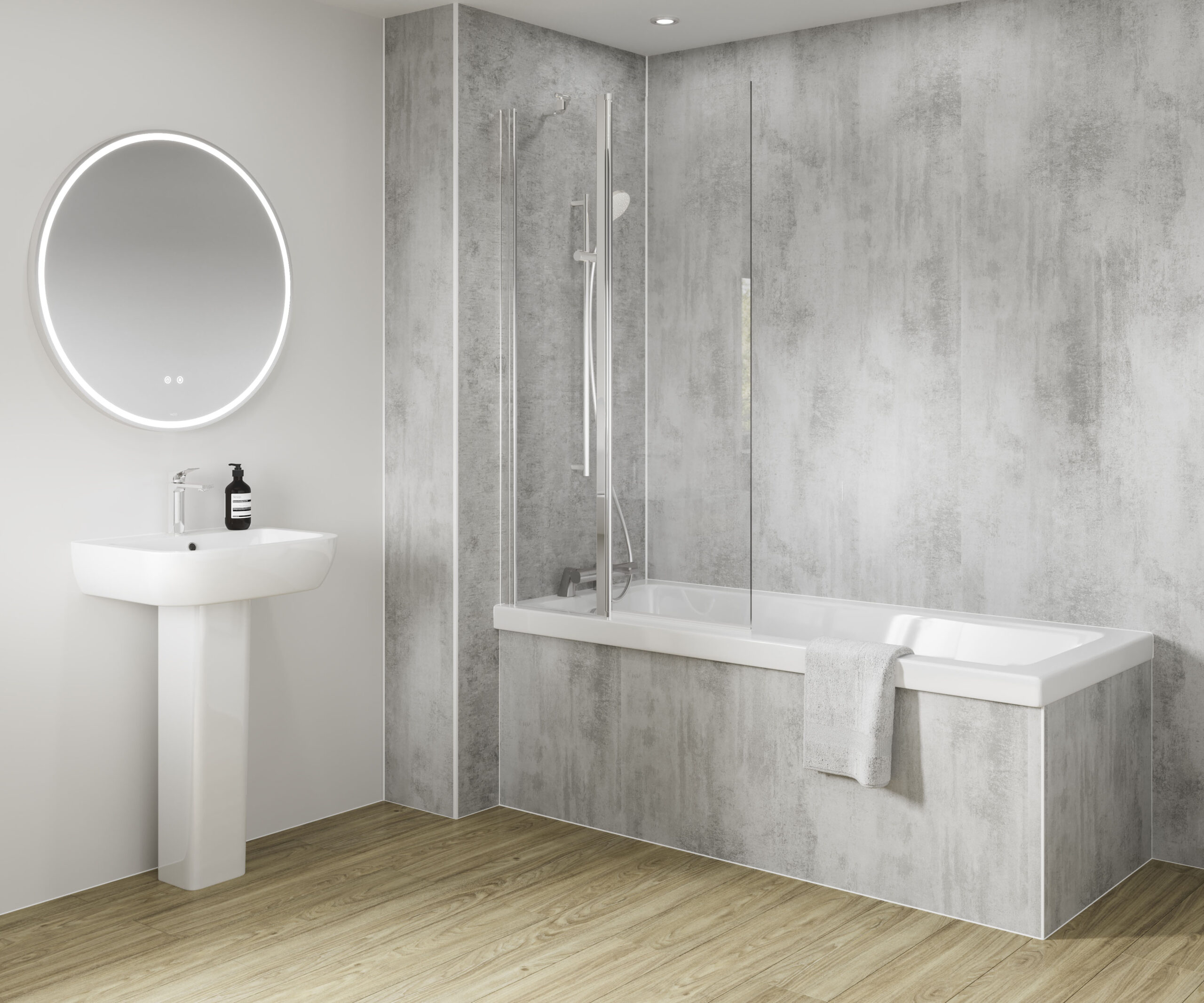New Innovations Taking Social Housing ‘By Storm’

As the popularity of bathroom wall panels continues to soar within the social housing market, Jamie Sandilands, Specification Sales Director at Multipanel, looks at why they are proving such an attractive proposition for housing associations.
During 2023, demand for Multipanel’s market leading bathroom wall panels doubled within the social housing market and it’s a trend that has continued over the last 18 months.
Stylish, practical and cost effective, bathroom wall panels offer myriad benefits to installers and are ticking all the boxes for housing associations, which are increasingly moving away from tiles and embracing these seamless surfaces.
Quicker Installation
You can’t underestimate how important it is to minimise installation times without compromising quality when providing affordable housing.
Whether creating new or refurbishing existing social housing, time is always of the essence as you’re either working around tenants who are often in-situ or trying to provide much-needed new homes faster than ever.
Wall panelling offers multiple installation benefits. Time wise, housing associations can save up to 3 days during the construction of social housing when they make the move to Multipanel wall panels.
Innovative systems such as our Hydrolock tongue and groove joining creates a discreet, completely watertight seal without the need for grout, which speeds up installation times considerably.
As well as resulting in less mess, avoiding the use of grout means installers don’t have to factor in drying times, making it around 5 times faster to install wall panels compared to tiles.
There’s also no need for extensive prep work as wall panels can be fitted directly on top of pretty much any surface, including uneven walls and existing tiles, and are extremely easy to cut down to size.
And, unlike tiles, which require the expertise of specialist tradespeople, wall panels can be installed by a wider range of industry professionals as well as DIYers.
In the current climate where there are well documented shortages of skilled tilers and fitters, this is hugely beneficial and can help to prevent delays to projects.
Financial Benefits
Speeding up installation times obviously has financial benefits and can significantly reduce labour costs. In addition, as wall panels require less materials than tiles and aren’t reliant on the skills of specialist tradespeople, they provide a more affordable solution for housing associations.
In fact, switching from tiles can result in overall savings of approximately 30% or £30 per m2 on each project, which is welcome news for the social housing market where quality yet economical solutions are in high demand.
This is one of the many reasons that Dunedin Canmore, which provides affordable housing, care and support to people in Edinburgh, the Lothians and Fife, uses Multipanel in its new homes as well as its refurbishments.
“I reckon using Multipanel saves us at least one day’s labour on each fit-out,” says John Hynde, Team Leader, Investment Works at Dunedin Canmore. “When you consider the volume of bathroom refurbishments we carry out, that’s quite a saving. It goes some way to explaining why we are not really focussed on tiles.”
Eliminate Mould and Promote Wellbeing
Historically there have been issues with mould in social housing and it remains an ongoing concern for many tenants. Greater awareness of the health issues associated with exposure to mould have led to changes in legislation and responsible housing associations are now addressing the issue face on by utilising modern materials that offer a safer and more hygienic solution.
In humid, steamy bathrooms where ventilation can be limited and moisture builds up, this is crucial. Tiles, which require grout – a material renowned for being a mould and mildew hotspot- are increasingly being replaced by housing associations who are prioritising the wellbeing of their tenants and opting for wall panels as a cleaner, more practical alternative.
As they have no grout lines, bathroom wall panels are sleek and seamless, making them far easier for tenants to keep clean. They are more hygienic than tiles as there’s no places for mould or dirt to build up, benefitting tenants directly while also reducing long-term maintenance demands for housing associations.
Dunedin Canmore’s John Hynde says: “Most often, our tenants tell me they are delighted and find the wall panels a breeze to clean.”
Calculating the Environmental Benefits
Sustainability is of paramount importance across the construction industry and housing associations have also had to make it a top priority. Wall panels offer housing associations a more sustainable alternative to tiles and now, with Multipanel’s latest Environmental Product Declaration (EDP) calculator, it’s quick and easy for specifiers to measure the CO2 savings – which can be around 60% on average – of using wall panels rather than tiles.
Exceeding Tenant Expectations
In recent years, advancements in technology and design have breathed new life into the wall panelling market and transformed this practical product into an aspirational, yet affordable surface covering. With the wealth of colours and finishes newly available, housing associations no longer need to compromise on style and are now able to deliver beautiful, trend-led bathroom wall coverings that exceed tenant expectations quickly and efficiently without stretching budgets.
